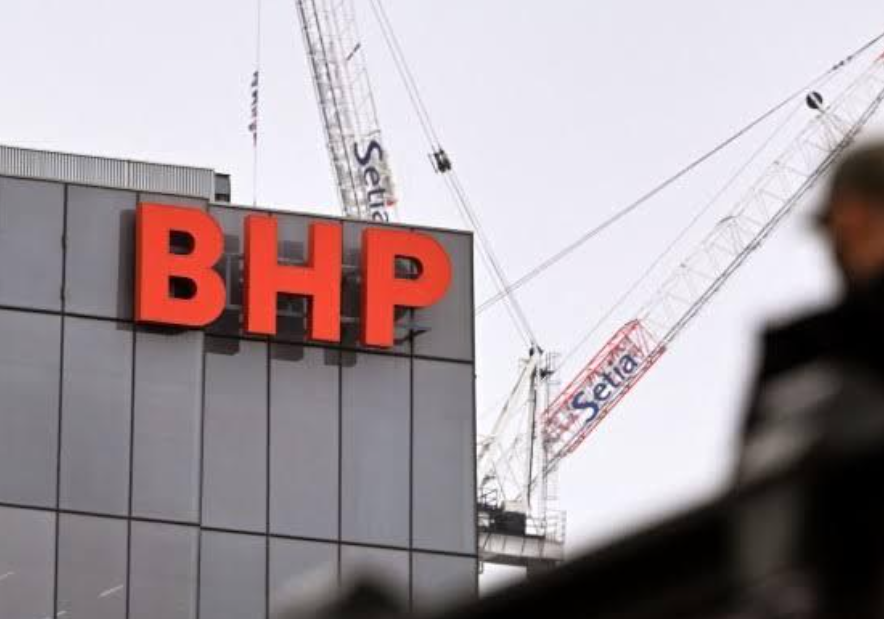Summary Box
- What Happened?
Fair Work Commission says BHP’s in-house labour hire firm to pay contract workers the same as direct workers.
- Impact:
Workers to receive pay increases of up to A$30,000; estimated A$66M financial impact on BHP.
- Industry Shake-Up:
Other mining heavyweights could face the same hardships. Now, contractors are being regulated more closely.
A Ruling That Could Reshape Miners’ Employment Status

CREDIT AFP via: Gettyimages
In a decision that could have profound implications for hiring practices across the Australian resources industry, the Fair Work Commission (FWC) has commanded BHP to bring hundreds of contracted mine workers up to wage parity across three of its top Queensland collieries — Saraji, Peak Downs and Goonyella Riverside.
In particular, they took aim at OS Production and Maintenance, BHP’s in-house labour-hire operation, ruling that the workers it supplied to BHP were not materially different from BHP employees in anything other than the price for which they could be purchased.
This “same job, same pay” order marks a new era in industrial regulation — one that may well have echoes far beyond BHP’s boardroom.
Behind the Case: Who Are OS Production Workers?
To grasp the implications, you need to understand OS Production & Maintenance’s role. While technically a separate company, it is wholly owned by BHP and supplies labour exclusively to BHP operations.
The workers in question:
- Wear BHP uniforms
- Use BHP equipment
- Follow BHP protocols
- Report to BHP supervisors
Despite this, their pay was reportedly 10–15% lower than permanent employees doing identical tasks.
That discrepancy triggered the case brought before the FWC, which found that the arrangement blurred the line between third-party contracting and internal workforce structuring.
Estimated Pay Gap and Exposure
| Category | Permanent BHP Employee | OS Worker | Gap (Estimate) |
| Annual Base Salary (AUD) | $140,000 | $110,000 | $30,000 |
| Average Roster Pattern | 7-on / 7-off | 7-on / 7-off | — |
| Superannuation | Equal | Slightly Lower | 2–3% variance |
| Bonuses & Incentives | Included | Excluded | — |
Estimated Total Back Pay Liability: Up to A$66 million, according to industry analysts.
Why This Matters
This isn’t just about pay — it’s about how mining companies structure their workforces. In recent years, big players have leaned on in-house labour hire to maintain “flexibility” while controlling costs.
But this ruling calls that flexibility into question, and sets a legal precedent that may:
- Spark wage adjustment claims across other mines
- Trigger renegotiations of existing labour contracts
- Influence hiring models across multiple industries beyond mining
Also Read: Gruyere Sparkles as Gold Road’s June Quarter Hits All the Marks
Union Reactions and Industry Pushback
The CFMEU, whose action sparked the issue, celebrated the decision as a great win for miners. “Miners were paid less for the same work because they had a different print on their shirt,” CFMEU national president Tony Maher said.
Meanwhile, the Minerals Council of Australia warned that such decisions would only move more coal further offshore or cost the jobs of the nation’s miners. “Employers are losing the ability to do business in a cost-effective manner,” one spokesman said.
What Does This Imply for Other Miners?
The cultural shock waves from the case are already being felt. Firms like Glencore, Whitehaven Coal and even contractors working for Rio Tinto are also said to be reevaluating their own staffing arrangements.
And if other “embedded” contractors are found to be performing similar work under different payment arrangements, the FWC determination might open the door to further claims — and perhaps a massive bill for back pay.
The Legality and What’s Next
BHP is said to be considering its legal options, a battle that if pursued on an appeal needs to contest not only the fairness of the decision, but the substance of a “genuine labour hire arrangement.”
Meanwhile, employment lawyers are bracing for a flood of similar cases. The ruling puts pressure on companies to either bring contractors onto full-time contracts or risk breaching industrial law.
Industry Context: Why Now?
Australia’s labour market has seen rising scrutiny post-COVID. With cost-of-living pressures and skill shortages, worker rights are now a national conversation.
In 2023, Parliament passed industrial relations reforms targeting labour hire abuses, laying the groundwork for this decision.
Final Word
The Fair Work Commission’s decision isn’t just a win for a few hundred BHP contractors — it’s a potentially historic moment for workers across Australia’s mining sector.
Companies that once relied on flexible workforce models are now being called to account. If nothing else, it’s a reminder that uniforms may differ, but fairness shouldn’t.

